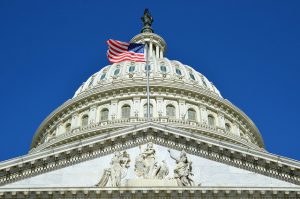As the Obama administration puts the final touches to regulations that could curb coal-fired power stations, Oklahoma is refusing to implement the future legislation, the latest salvo in the ongoing domestic attack on the US's greenhouse gas reduction target submitted to the UN in late March.
Last week, the state’s Republican Governor Mary Fallin signed an executive order barring its own Department of Environmental Quality from implementing the president’s Clean Power Plan that is expected within the next few months.
"I will not submit [an implementation plan] to ensure Oklahoma's compliance with such a clear overreach of executive authority," the document says, pitching the resource-rich and solidly Republican state against the White House ahead of the presidential and congressional elections in 2016.
The Clean Power Plan, which aims to reduce pollution from power plants by 30% below 2005 levels by 2030, is a central element of the US target to reduce greenhouse gas by 28% from 2005 levels by 2025.
Republican politicians at the federal and state level as well as contenders for the party’s presidential nomination are trying to outdo each other in attacking Barack Obama’s efforts to regulate greenhouse gases. But the more substantive challenge comes from a coalition of states and heavy industry intent on fighting the proposed regulations through the court system.
The state of Oklahoma is part of this coalition led by the coal state of West Virginia and the coal producer Murray Energy Corporation. As with the governor’s executive order, this coalition acted preemptively, filing a lawsuit against regulations that don’t yet exist.
Court battle
When the case was up for argument in mid-April, the judges at the US Circuit Court of Appeals for the District of Columbia seemed inclined to dismiss a challenge to the clean air regulations before they are officially released by the Obama administration.
It was not clear, however, where the three judges on the panel, all of whom had been appointed by Republican presidents, stood on the issue. Should they dismiss the case, the plaintiffs are likely to return after the final rules are published.
Central to the case is the question of whether the Environment Protection Agency (EPA) has the authority to regulate greenhouse gas emissions. To experts in the climate change community, the answer to that has been clear for many years: “The Supreme Court has ruled three times that greenhouse gases can be regulated under the Clean Air Act,” said Gabe Pacyniak from the Georgetown Climate Center.
Opponents of executive action contend that this does not include the specific authority to regulate the greenhouse gas emissions of power plants. Embarrassingly for Obama, his former mentor, the Harvard Law School professor Laurence Tribe, is giving legal advice to the plaintiffs and has called the proposed regulations an “unconstitutional power grab.”
For the challengers, the legal route looks more promising than the prospect of Congressional action. Republicans in the House and Senate have proposed legislation to either halt the Clean Power Plan’s implementation or to allow states to opt out of the rule’s requirements, but they lack the votes to overturn a presidential veto.
This explains why the Senate’s Republican majority leader Mitch McConnell (who represents the coal producing state Kentucky) now hopes to foment resistance at the state level. In March he sent a letter to all 50 governors, encouraging them to decline to implement a strategy to meet the EPA’s carbon limits. Oklahoma’s Fallin was the first governor to follow this suggestion.
Political bluster
“There will be states and politicians who grandstand and try to stop the government from moving forward,” says Howard Learner of the Chicago-based Environmental Law & Policy Center, who follows the partisan debate in nearby Midwestern states such as Ohio and Iowa that will play a decisive role in next year’s elections. “But after the political blustering is over, most will take steps to implement the regulation.”
After all, the number of states that openly support the EPA’s plans is equally big as the number of states involved in the lawsuit. North Carolina has joined neither camp, but the lower chamber of the state's congress recently passed an action plan for implementing the expected EPA regulations in the teeth of fierce resistance from right-wing Tea Party Republicans.
As for Oklahoma, escaping the reach of federal rules might not be so easy. If the executive's regulations are promulgated and upheld, states that refuse to write their own plan to meet the federal standards shall be regulated directly by the EPA.







